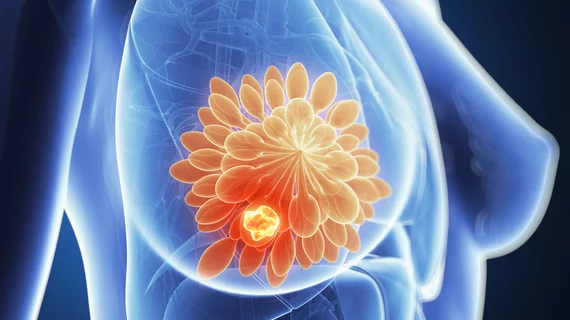Artificial intelligence bests radiologists at spotting breast cancer: ‘The time has come’
Artificial intelligence appears to be just as adept as radiologists at pinpointing breast cancer in mammograms, and it might be time to shift the treatment paradigm to address this reality.
That’s according to a new analysis out of University Hospital Sweden, published Thursday in JAMA Oncology. To get there, a Swedish research team recently took three commercially available AI algorithms for a test drive, using them to retrospectively analyze images from more than 8,800 patients.
They determined that the best of the three unnamed algorithms—companies remained anonymous for the analysis—proved as proficient as the average radiologist at diagnosing the disease.
"We conducted the study in order to find out how far the algorithms have developed and whether there is any difference between the available systems," study author Fredrik Strand, MD, PhD, a radiologist with the Karolinska Institute in Solina, said in a statement. "The results show that, in principle, the best algorithm is ready for use and that there is a significant difference between the various algorithms on the market."
Strand et al. performed their experiment utilizing images gathered between 2008 and 2015 at an academic medical center in Stockholm. Patients in the study group ranged from age 40 to 74, with 739 previously diagnosed with breast cancer and the other 8,066 serving as healthy controls.
Bottom line, the research team found that area under the operating curve between the three computer-aided detection algorithms ranged from 0.92 to 0.956. The very best of those algorithms matched and, in some instances, surpassed the performance of radiologists, Strand and colleagues found. It logged an 81.9% sensitivity rate when operating at 96.6% specificity in a simulated model. But combining a radiologist with the top AI system identified more cancer cases than teaming the two radiologists in the study with one another.
Strand and colleagues said the moment is ripe to place AI in a more prominent role, given the results.
“We believe that the time has come to evaluate AI CAD algorithms as independent readers in prospective clinical studies in mammography screening programs,” they concluded.
Read much more on the analysis in JAMA Oncology here.

